The A to Z of Yeovil’s History – Yeovil’s Virtual Museum
Posted on 28th September 2021
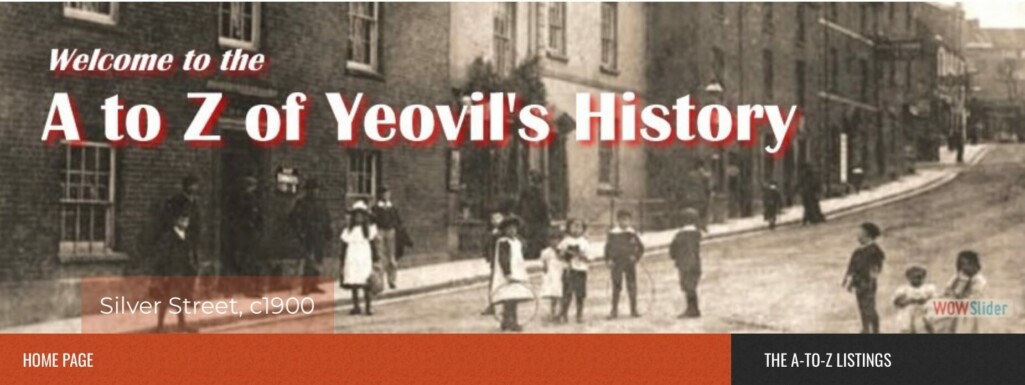
I wonder how many of us, me included, take this unique, photo packed source of information for granted?
Please allow me to tell you about some recent research of mine.
In September 1933 my father, Ralph Collings was fortunate indeed to be apprenticed as an Ironmonger to Hill, Sawtell in Yeovil. He had left school the previous summer, a bad time in which to find a job as it was right in the middle of what would become known as ‘the great depression’.
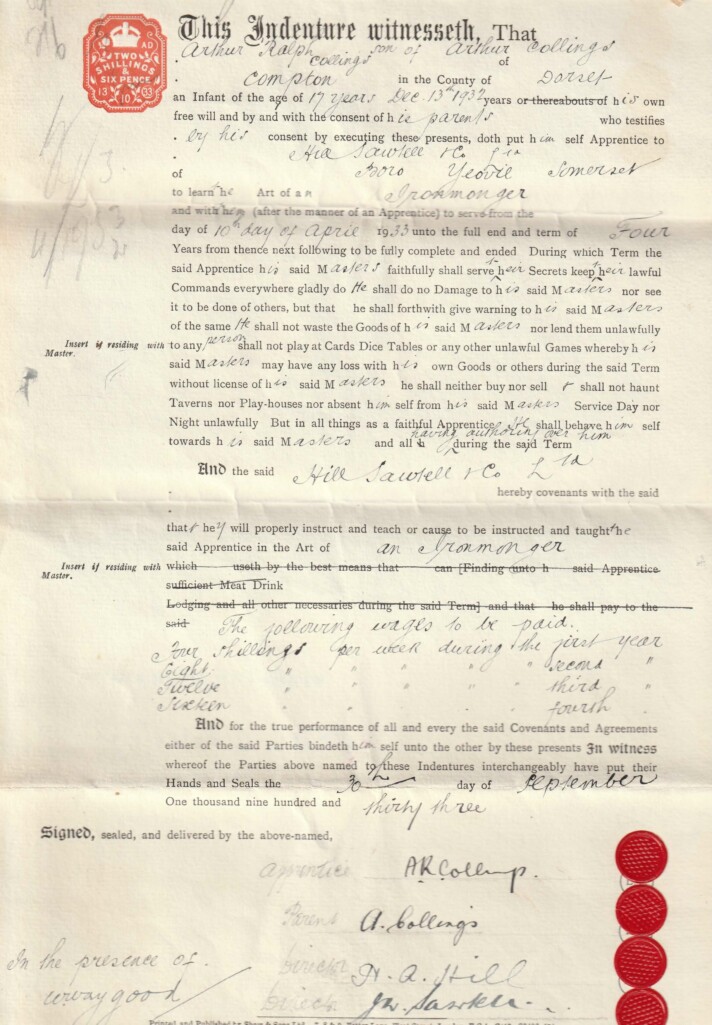
Having successfully completed his apprenticeship in May 1937 it was time to progress and J W Sawtell wrote a reference for Ralph recommending him ‘with every confidence- he is a good salesman, attentive to customers, methodical and punctual in his duties.‘ He may have moved on but he would never forget the chance he had been given by his old firm, revisiting Hill, Sawtell regularly. Hill, Sawtell closed in the 1970s.
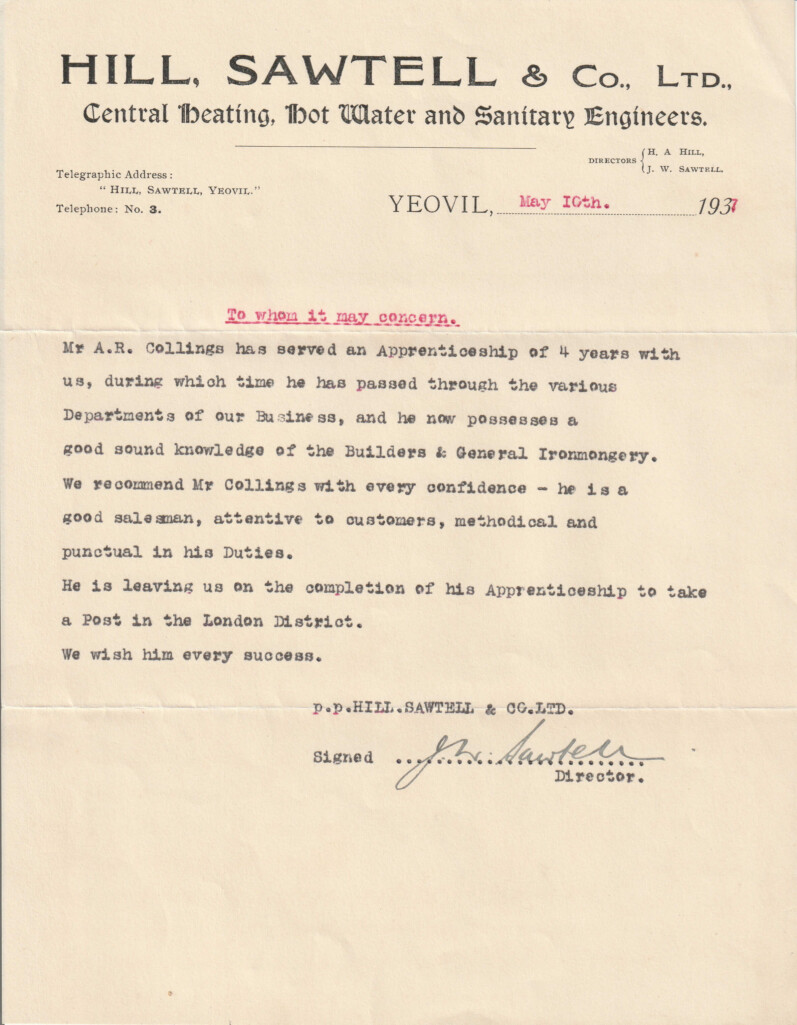
Knowing nothing at all about Hill, Sawtell as I turned to the website – The A to Z of Yeovil’s History below, I discovered that the ironmongery was originally established by members of the Petter family and the website reveals a building in the Borough with the name ‘Petter’ over it with a later photograph with ‘Hill, Sawtell’ on the same building.
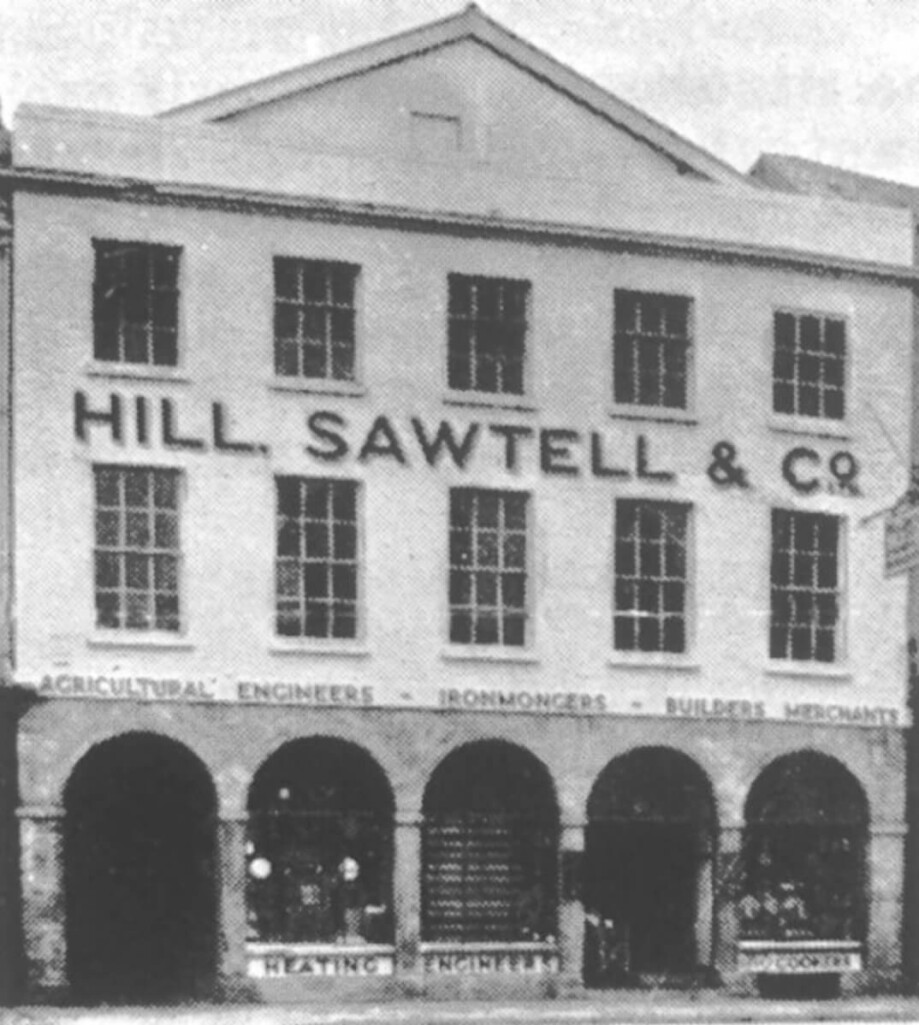
In this photograph the three main divisions can be seen – Agricultural Engineers, Ironmongers and Builders Merchants. There was also another division for Central Heating, Hot Water and Sanitary Engineers as well as Plumbers and Gasfitters. It would appear that large numbers of local tradesmen, craftsmen and farmers would beat a path to the doors of Hill, Sawtell to obtain what they needed to carry out their daily occupations.
I discovered some photographs taken inside the showroom that I found extremely interesting. They are repeated here courtesy of Michael Wilcox. http://www.yeovilhistory.info/hill-sawtell.htm
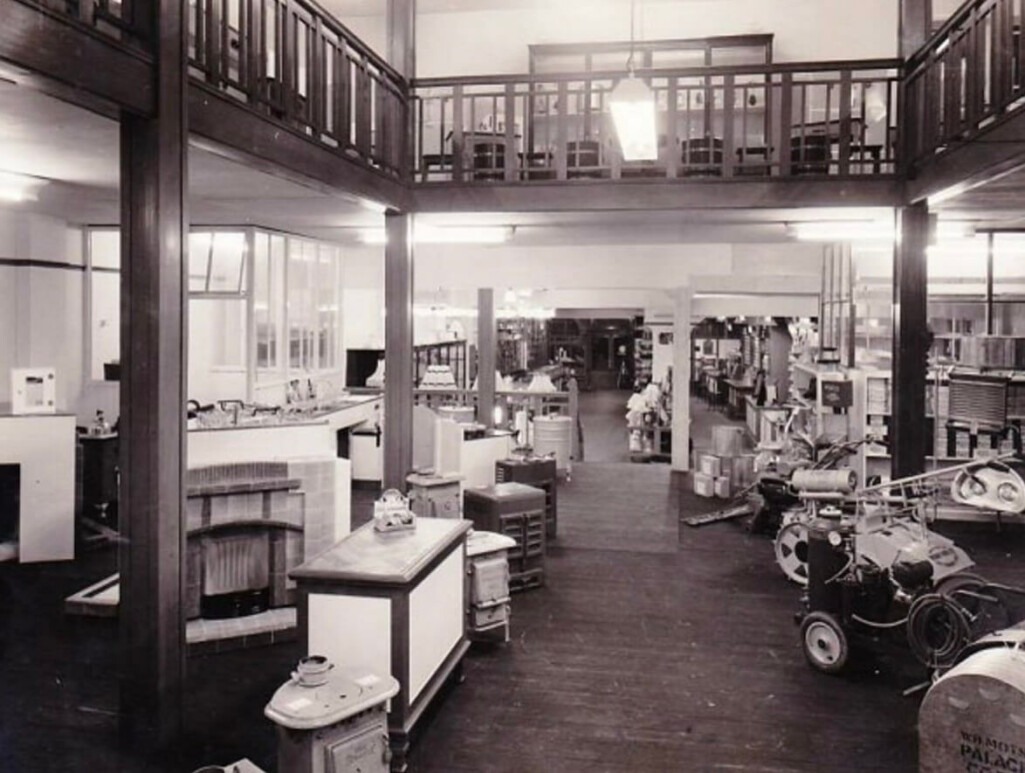
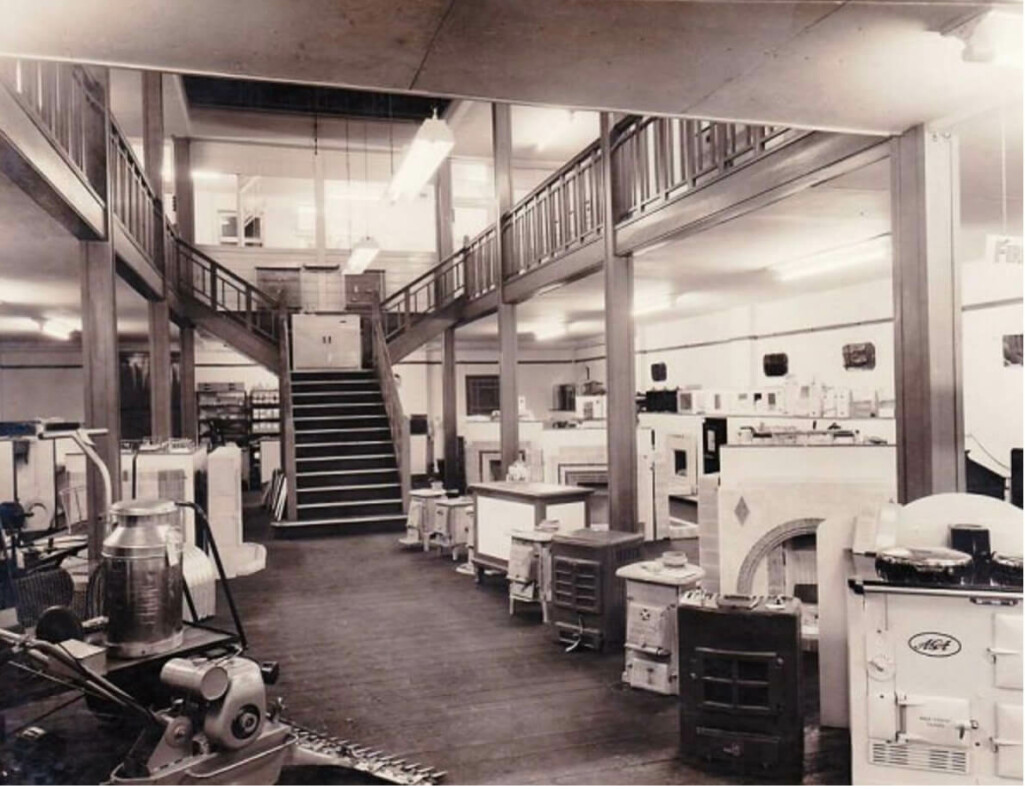
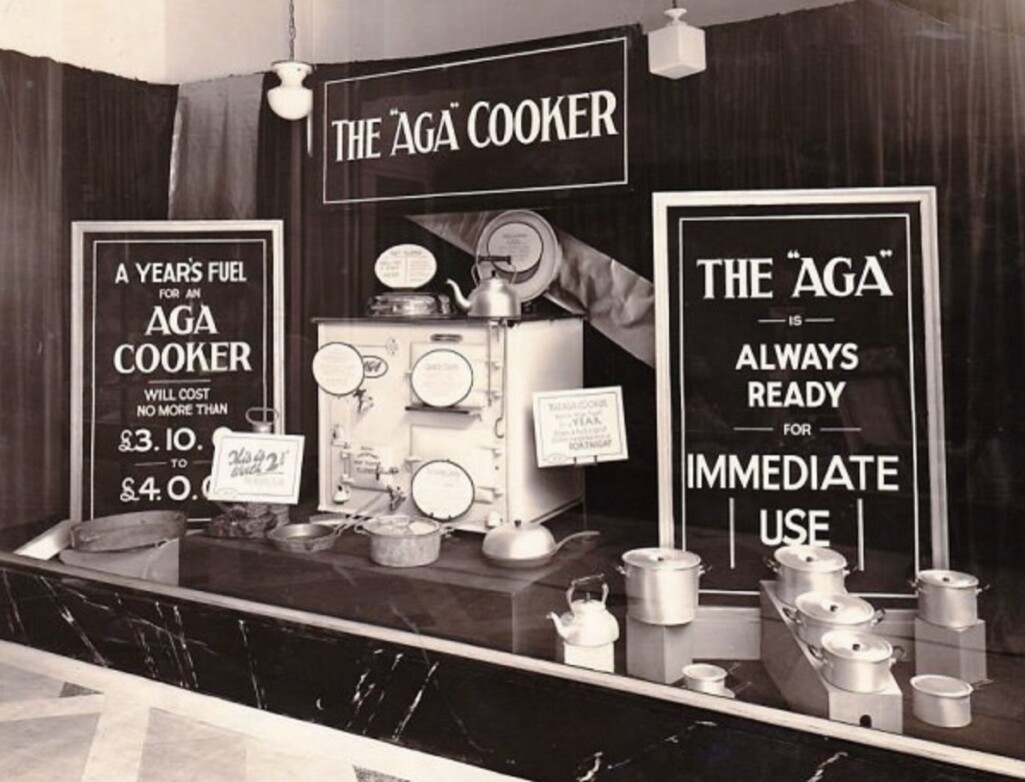
My satisfying results prompted me to send an email to Bob Osborn who runs the The A to Z of Yeovil’s History
‘I had a proper look at your work on Petters and Hill, Sawtell and it is really terrific. A rather inadequate thank you from someone with some sort of inkling of the many diligent hours that you must have spent in order to bring this to us. Have you ever come across anyone else in any other town doing anything like it? I rather suspect not. I believe it is your index that is the key. By deciding on the A-Z as your title seems to me your master stroke. How long have you been working on this?’
Bob replied: ‘I started the website in February 2014 and have worked on it almost every day since – these days it’s usually only two or three hours each morning but many times I’ve started on it at 7am and have still been going at 7pm. My wife says it keeps me out of the pubs, but I prefer to think more along the lines of “a chap has to have a hobby!”
The statistics (at the time of writing this blog) speak for themselves – viewed in 133 countries with 3,041,325 page views. The website currently contains more than 2,485 pages (equivalent to over 12,500 A4 printed pages) and over 10,970 images. I don’t know of any similar town website.
I taught web design at Yeovil College for some twenty years and also had my own web design company, so I could see that there were going to be a huge number of pages if I progressed the website properly. The aim was to reach information within three clicks of your mouse. The trick was to break down the index into searchable ‘chunks’ and the A to Z idea came to me. I also grouped pages into ‘major themes’ such as people and places, available from every page below the A-Z matrix. I then introduced ‘minor themes’ such as parish registers, the document chest, etc., which are only available from the home page.
Later this month South Somerset District Council have agreed to give me full access to their photographic collection (with the use of a student to assist me) so I can copy anything I don’t already have on the A-to-Z. When I am no longer able to continue with the website, Yeovil Town Council have agreed to maintain it and keep it going, although they will not develop it further.
Having received Bob’s reply and his agreement for me to write a blog about the website I began to dip further into the site.
First of all I found a display of advertisements mainly extracted from Whitby’s Yeovil Advertiser between 1887-1914. Who can fail but to find these fascinating?
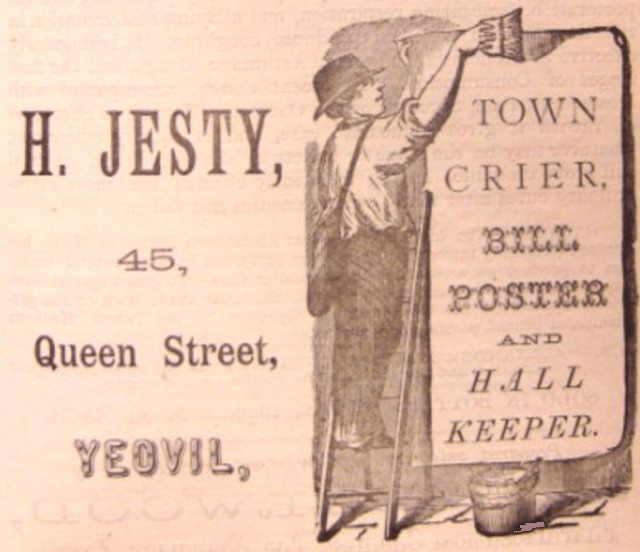
One in particular caught my eye: ‘H Jesty, Town Crier, Bill Poster and Hall Keeper.’ What was a Hall Keeper? Back to the A-Z and looking under ‘J’ there he is – one Henry Jesty and ‘Hall Keeper’ refers to him taking care of the town hall which had opened in 1849. http://www.yeovilhistory.info/jesty-henry.htm
Next I explored the 7,600 trades and traders in Yeovil. I had not located this revealing list before and it is available in three different orders: by name or company, by date and name and by trade groups. Here I discovered that Bob had found six mentions in various trade directories for Hill, Sawtell ranging from 1911 through to 1954. I sense that behind the collation of this very comprehensive list lay hours and hours of searching directories and publications for names. I asked Bob if I had made a correct assumption here and he replied: Yes – the information was added to a giant spreadsheet for sorting and re-sorting. The list is far from complete.
A quick glance through Sources and Bibliography used for information is very revealing. There are around 180 listed but some contain more than one source such as ‘Trade Directories various from 18thC onwards.’ I am assuming here that Bob has searched through all these publications, extracting names of individuals with a connection to Yeovil’s past. His further research then enabled over 480 of these people to be ‘fleshed-out’. In addition Bob has written around 15 books in soft-back and some available as eBooks.
I asked Bob if he would share some of his favourite photographs and tell us why he has chosen them?
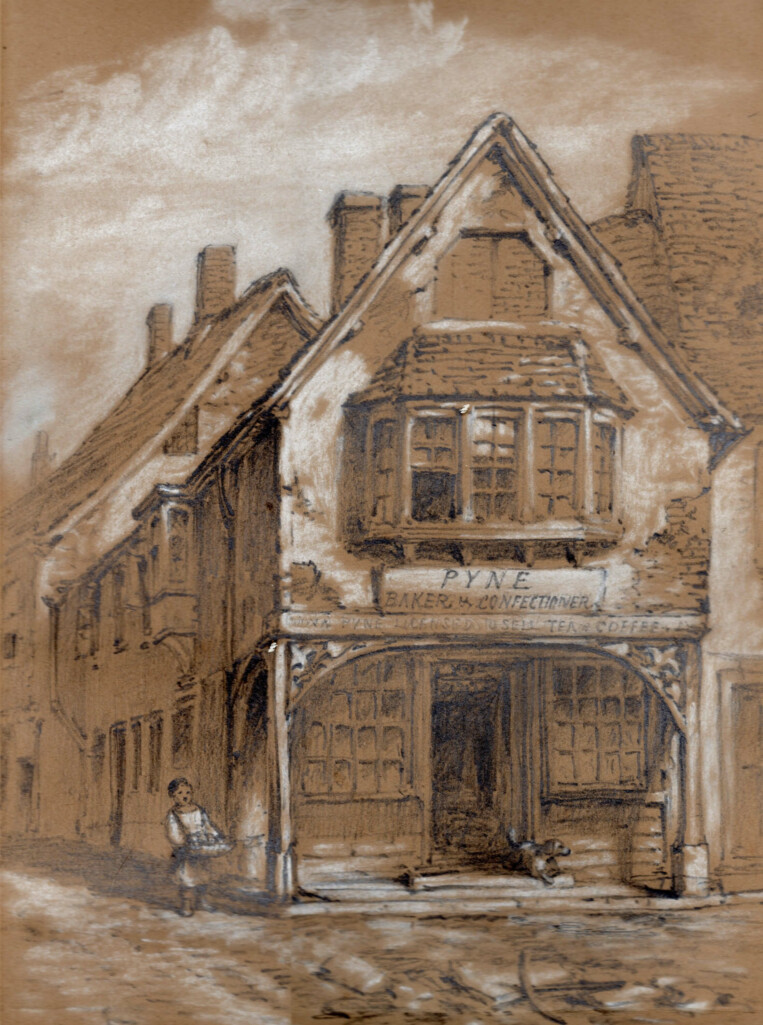
My favourite Yeovil photograph is of a building in the Borough, on the corner of Wine Street, called ‘Under Bow’ and is typical of what most buildings in ‘old Yeovil’ actually looked like. It was taken in 1861 by Yeovil photographer Frederick Treble. For copyright reasons I am not allowed to share it outside of my website, so I have included here an original pastel and pencil sketch from my collection, dated 1865, by Walter Francis Tiffin (1819-1890) of Salisbury. The sketch was made during his brief stay in Sherborne, but presumably from sketches he made before the building was largely destroyed by fire in December 1861 – two years before this sketch.
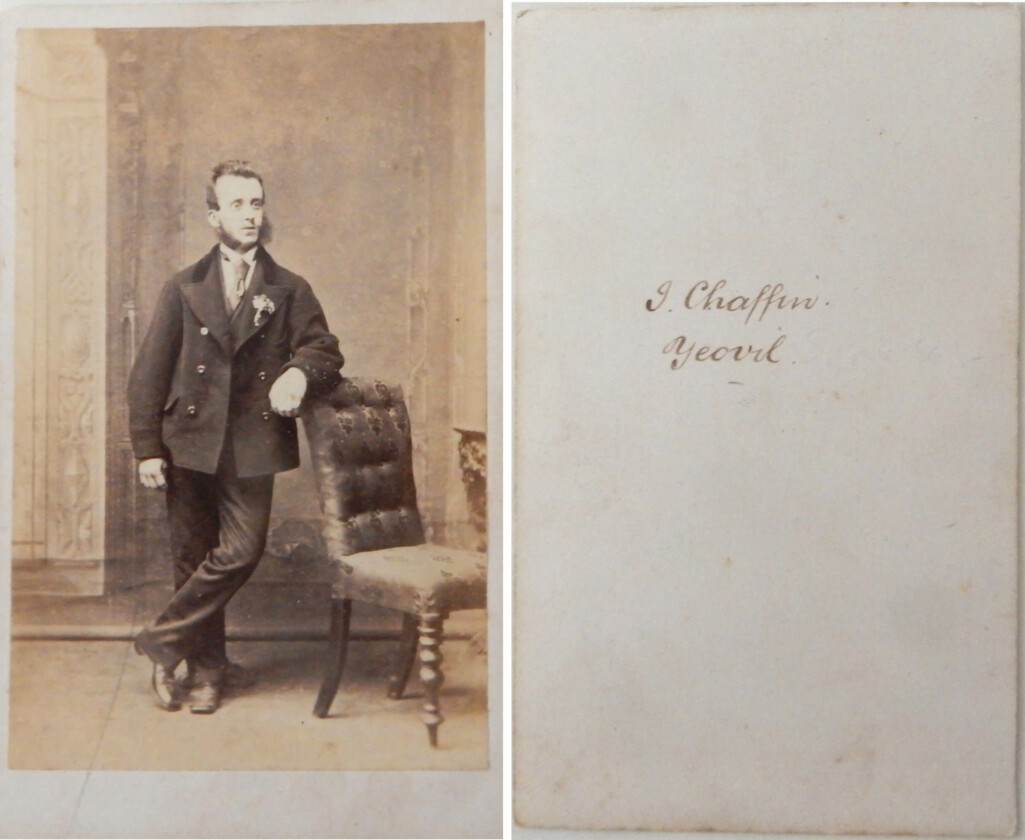
My next choice is a carte de visite, or CDV, by John Chaffin (1826-1885). The CDV format was only introduced to Britain in 1859. I have made a study of Yeovil photographers, specialising in Chaffin and his family, and have over a hundred of Chaffin’s CDVs in my collection. This, though, must be one of his absolute earliest photographs made in 1862 (when he first set up his studio in Hendford, next door to the Butchers’ Arms), since the name on the back is hand-written – which indicates that Chaffin was producing cartes before he had even arranged for their backs to be printed professionally.
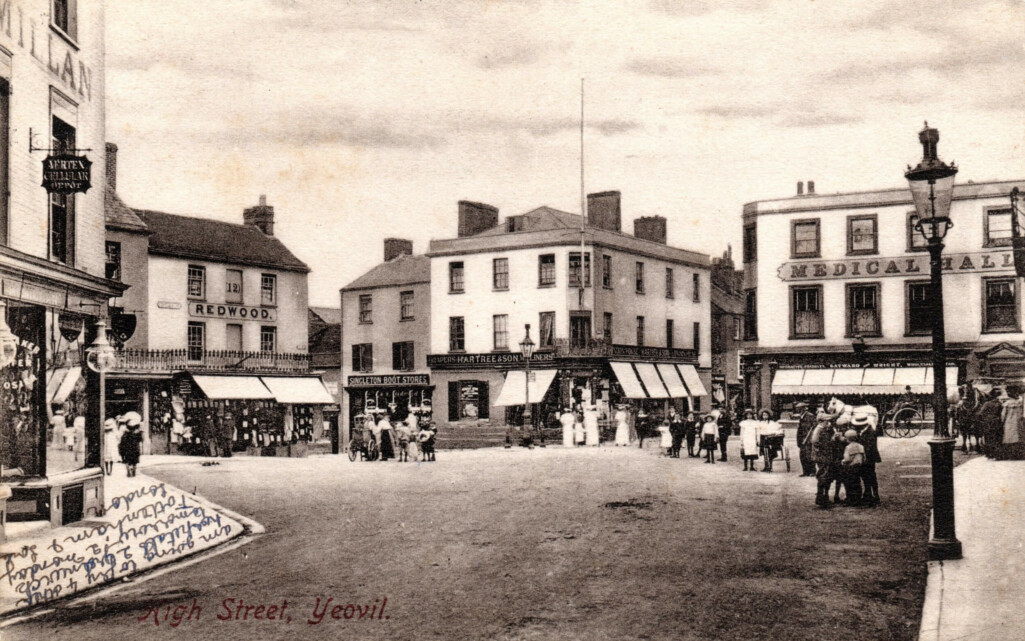
My final choice is from my collection of over 1,000 different Yeovil postcards and depicts a scene in the Borough in a postcard dated 1906 by E Whitby & Son of Yeovil – in the days when everyone stood still in the streets when the photographer was around. At the centre is London House with Silver Street to its left and Middle Street to its right. At right is the Medical Hall (destroyed by German bombing in 1941) with Wine Street off to the right. Note, in the lower left corner, the message from the sender who clearly did not realise that the rule forbidding a message on the address side of the card had been rescinded.
I have only really scratched the surface of this remarkable collection and if you have not visited this website before I urge you to look through it and add your search to the ever growing number of those finding something of interest here: http://www.yeovilhistory.info
Barbara Elsmore
September 2021
If you would like, please send us your comment.
Comments
Dear Barbara,
Many thanks indeed for yet another fascinating item! You might be interested to learn of another similar, town-based website – “Monkey Town: The History of Heywood” (www.heywoodhistory.com). Created by Chris Dawson, in 2012, its focus is the former-cotton mill town of Heywood, Lancashire – where I have many deep-rooted family connections.
Best regards,
Robin Ansell
Sherborne
